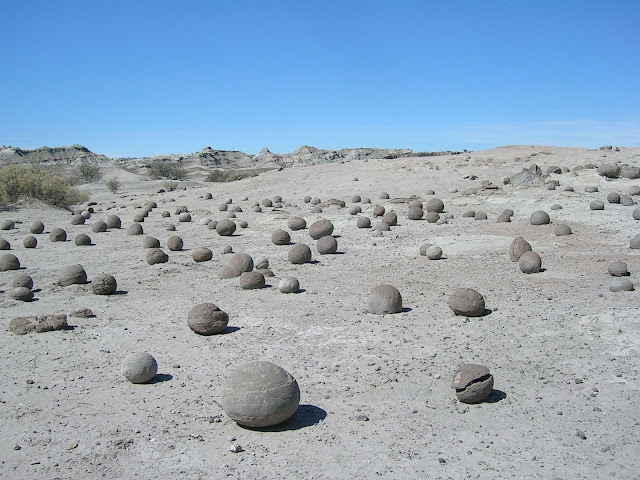Wind and water have eroded the sedimentary rocks in the Valley of the Moon.
Posted by Hugo Rep
Posted on May 02, 2010
with 2 comments
Finally much later, perhaps some ninety million years ago, the movements geologically known as ‘orogenesis andina’, or mountain formation, actually began.
These movements in turn, produced balancing movements, fractures, folds, landslides, and the ascension and descension of ancient crystal blocks, forming the hills that today surround the region and the most recent layers of sediments.
Descendants of the dinosaurs-the most spectacular birds of this valley are the condors and the South American ostrich. On the contrary, of the ‘true reptiles’, only the small lizards and some poisonous snakes (the coral and yarara) remain.
These movements in turn, produced balancing movements, fractures, folds, landslides, and the ascension and descension of ancient crystal blocks, forming the hills that today surround the region and the most recent layers of sediments.
Wind and water have eroded the sedimentary rocks in the Valley of the Moon.
Sedimentary rock is one of the three main rock groups (along with igneous and metamorphic rocks) and is formed in four main ways: by the deposition of the weathered remains of other rocks (known as 'clastic' sedimentary rocks); by the accumulation and the consolidation of sediments; by the deposition of the results of biogenic activity; and by precipitation from solution.Read also: The Yacuy Provincial Park is a protected natural area in the province of Misiones. | Argentina Photo Gallery
The Valley of the Moon in Prehistory.
Since the large reptiles had already disappeared in the Holocene era, some 10,000 to 12,000 years ago, the valley was populated by pumas, guanacos, Creole hares, and a new type of animal--the birds.Descendants of the dinosaurs-the most spectacular birds of this valley are the condors and the South American ostrich. On the contrary, of the ‘true reptiles’, only the small lizards and some poisonous snakes (the coral and yarara) remain.
Man arrived here only a few million years ago and decorated the zone with his rock-paintings or petroglyphs and scattered his arrowheads in the area.
Bear in mind that the first scientists only appeared in the valley in the second half of the last century whereas, approximately one decade ago, the recording of the last mutation of fauna coincided with the arrival of the first tourists, who came to see this mysterious ‘Valley of the Moon’.The existing infrastructure consists of nothing more than a small house for the park rangers and an onsite museum.
Travelers may, and it is strongly suggested they bring their own provisions, beverages, sunblock, etc. or whatever they feel necessary.. The tour around the park (40 km). Visitors are accompanied by a park ranger in their own vehicle, in a caravan with other cars, taking about four hours. Travelers can find lodgings in the charming village of San Agustin of Valle´ Fertil, or Pataquia, and Villa Union.Wind and water have eroded the sedimentary rocks in the Valley of the Moon.Click to Tweet
If you liked this article, subscribe to the feed by clicking the image below to keep informed about new contents of the blog:
I hope you enjoyed this book. If you have any questions, or want to supplement this post, please write in the comments area. You can also visit Facebook, Twitter, Linkedin, Instagram, Pinterest and Feedly where you'll find further information in this blog. SHARE THIS!
Etichette:
National Parks,
San Juan


















Excellent article about the natural beauties of Argentina. Greetings. Vote and share on social networks.
ReplyDeleteThank you very much for commenting and participating.
Delete